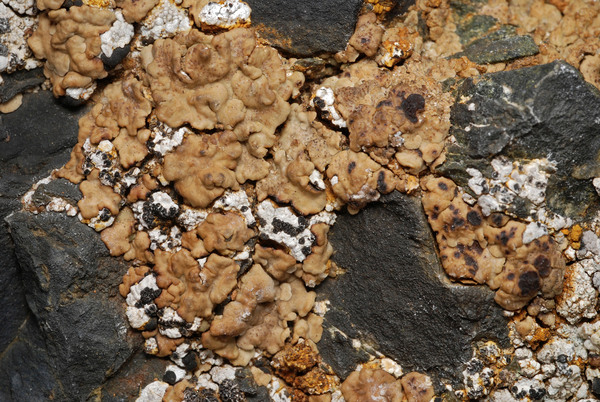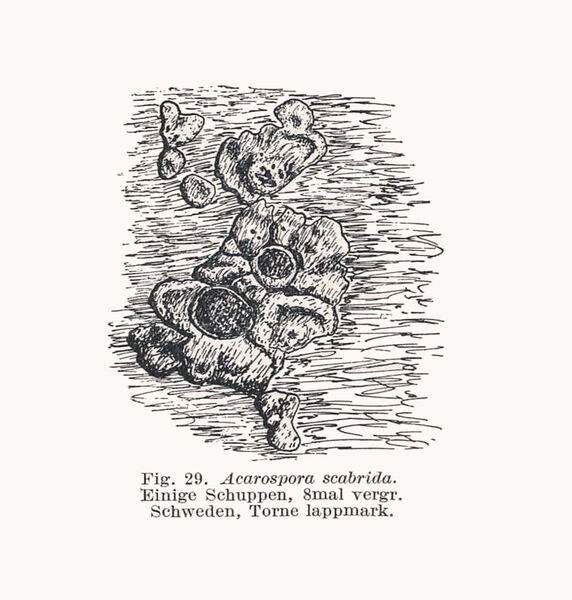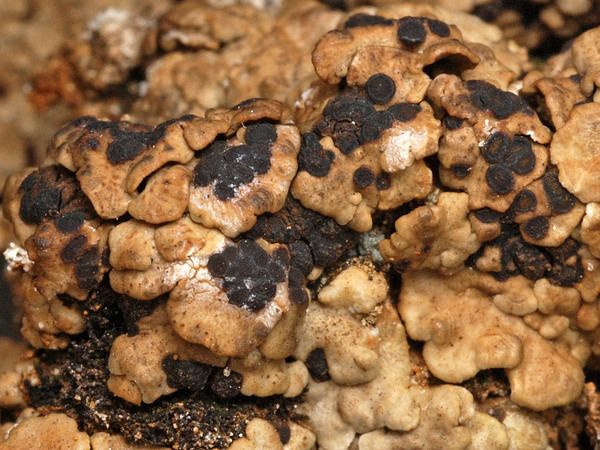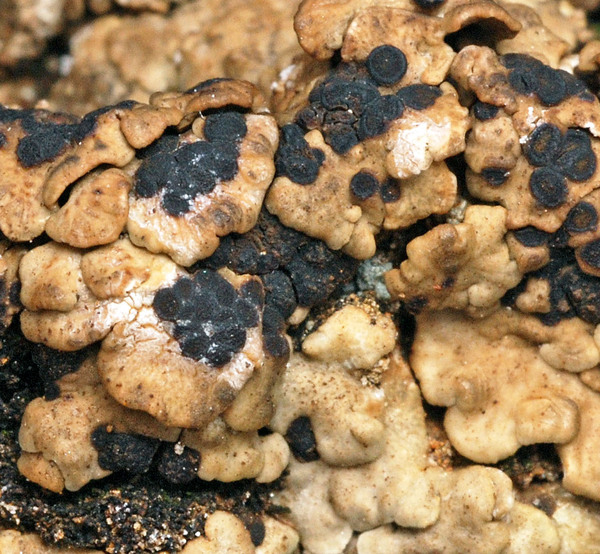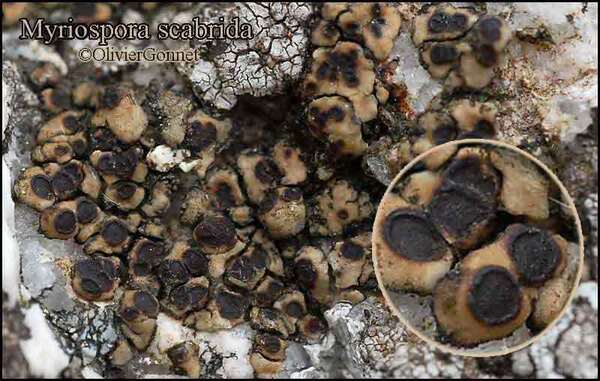Myriospora scabrida (Hedl. ex H. Magn.) K. Knudsen & Arcadia
in Arcadia & Knudsen, Opuscula Philolichenum. 11: 22. 2012.. Basionym: Acarospora scabrida Hedl. ex H. Magn. - Göteborg. Vetensk.-och Vitter.-Handl., Ser. 4, 28, 2: 55, 1924
Synonyms: Silobia scabrida (Hedl. ex H. Magn.) M. Westb.; Trimmatothelopsis scabrida (Hedl. ex H. Magn.) Cl. Roux & Nav.-Ros.
Distribution: C - Tosc (Nascimbene & al. 2021).
Description: Thallus crustose-areolate to subsquamulose, the areoles round in outline, at first bullate, smooth, scattered to crowded, becoming subsquamulose, incised to irregularly lobed, often imbricate, the fertile ones 0.5-3.5(-7) mm wide, pale grey to brown, rarely partly white-pruinose, flat to slightly convex. Epicortex 10-23 μm thick; cortex paraplectenchymatous, 40-60 μm thick, of isodiametric cells, without crystals; algal layer interrupted by thick anticlinal bundles of medullary hyphae; medulla white, prosoplectenchymatous; lower cortex absent. Apothecia rounded, 0.2-1(-1.8) mm across, at first immersed but the mature ones distinctly raised above the thallus, 1-7(-12) per areole, with a red-brown to almost black, flat, often scabrid, epruinose disc surrounded by a distinct, somewhat raised, often blackened parathecial margin, the thalline margin poorly developed. Proper exciple up to 100 μm wide laterally, colourless to yellow-brown, the uppermost cells with golden to dark brown walls; epithecium dark golden brown to yellowish brown, 10-15 µm high; hymenium colourless, (110-)140-170 μm high; paraphyses 1-1.5 μm thick at mid-level, the apical cells to 4 μm wide; subhymenium brownish, 30-50 µm high; hypothecium 12-17 µm high, prosoplectenchymatous. Asci 100-200-spored, clavate, the apical dome K/I-, 75-90 x 15-20 µm. Ascospores 1-celled, hyaline, ellipsoid, (3-)4-5 x (1.5-)1.7-2 μm. Pycnidia rare. Conidia ellipsoid to subglobose, 1.5-2.5 x c. 1 μm. Photobiont chlorococcoid. Spot tests: cortex and medulla K-, C-, KC-, P-, UV-. Chemistry: without lichen substances.Note: a species with an epilithic thallus consisting of pale grey to pale brown areolate to subsquamulose areoles, and 1-2 mm wide apothecia with brown, somewhat raised discs; usually on acidic schistose rocks . Known from Tuscany, but probably more widespread in Tyrrhenian Italy.
Growth form: Crustose
Substrata: rocks
Photobiont: green algae other than Trentepohlia
Reproductive strategy: mainly sexual
Commonnes-rarity: (info)
Alpine belt: absent
Subalpine belt: absent
Oromediterranean belt: absent
Montane belt: absent
Submediterranean belt: absent
Padanian area: absent
Humid submediterranean belt: extremely rare
Humid mediterranean belt: extremely rare
Dry mediterranean belt: absent
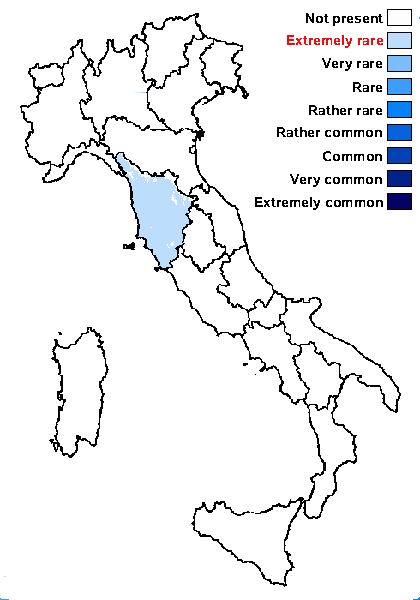
Predictive model
Growth form: Crustose
Substrata: rocks
Photobiont: green algae other than Trentepohlia
Reproductive strategy: mainly sexual
Commonnes-rarity: (info)
Alpine belt: absent
Subalpine belt: absent
Oromediterranean belt: absent
Montane belt: absent
Submediterranean belt: absent
Padanian area: absent
Humid submediterranean belt: extremely rare
Humid mediterranean belt: extremely rare
Dry mediterranean belt: absent

Predictive model
 INDEX FUNGORUM
INDEX FUNGORUM
 GBIF
GBIF
 DOLICHENS
DOLICHENS
